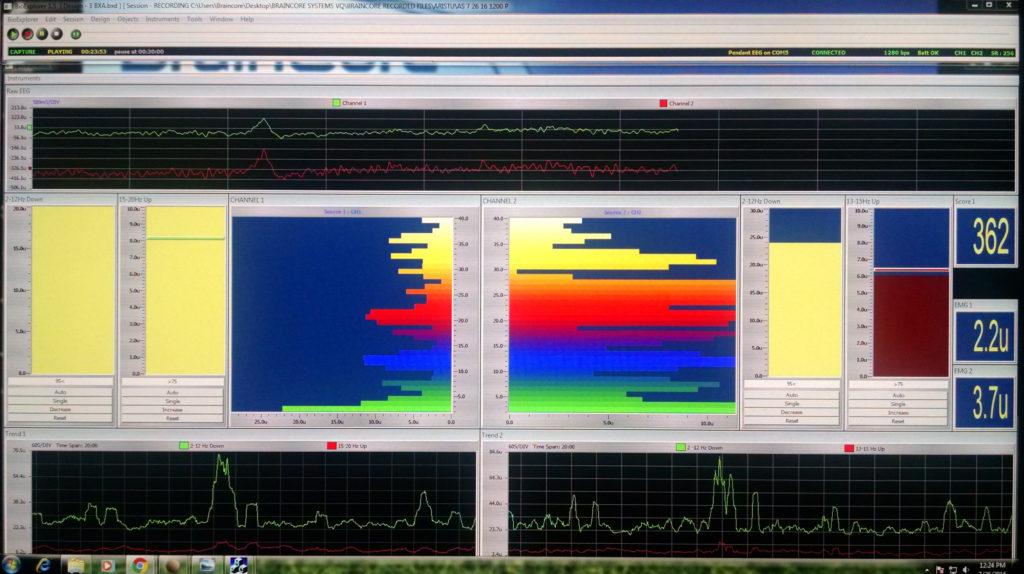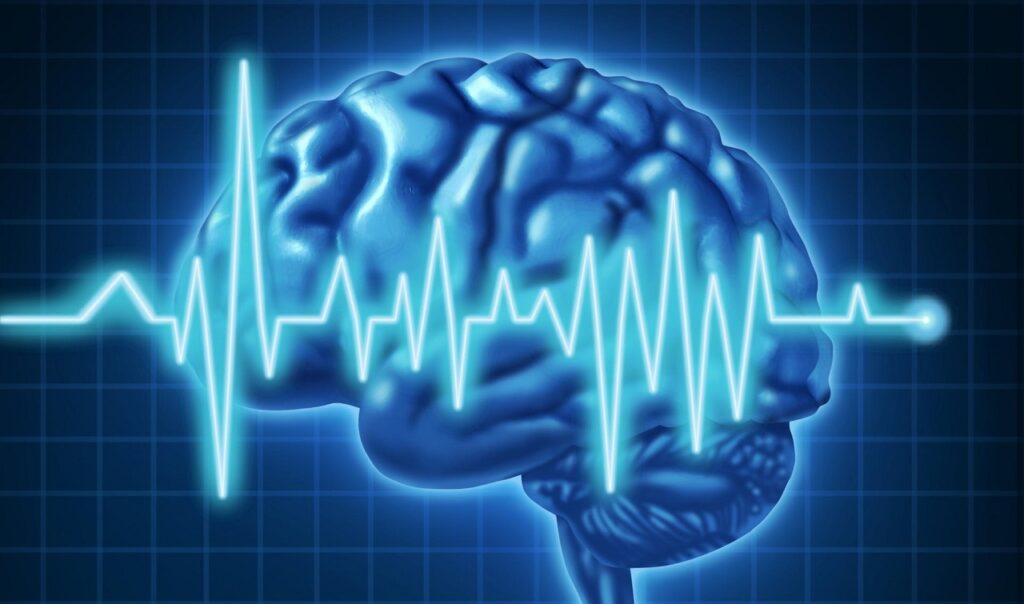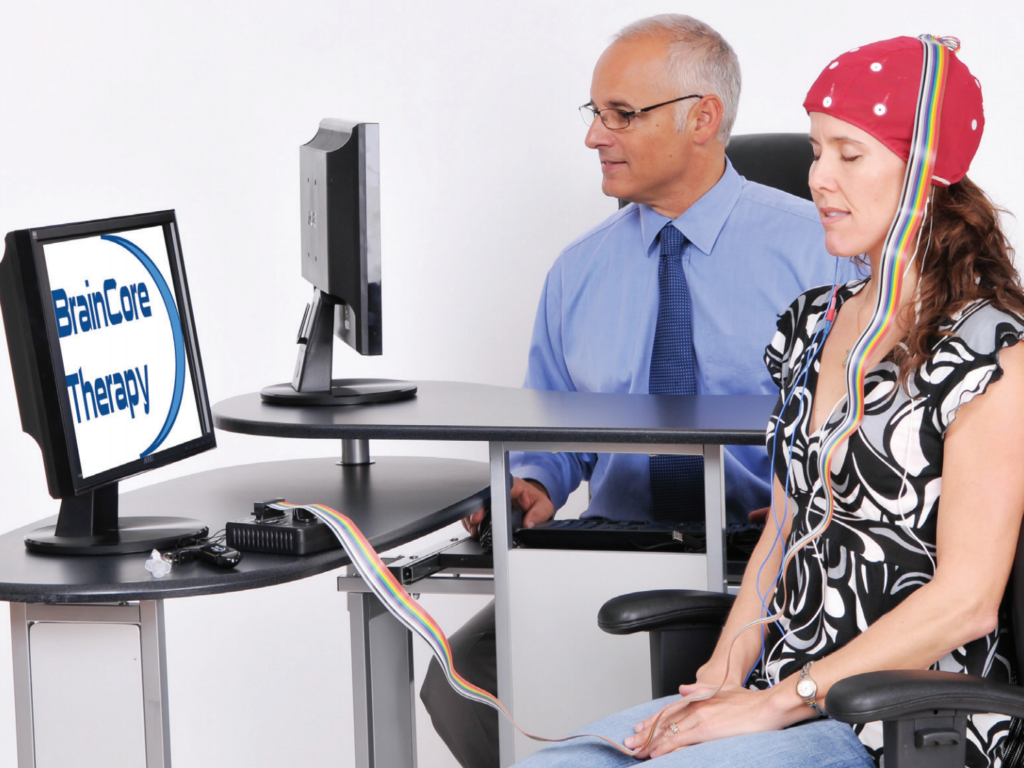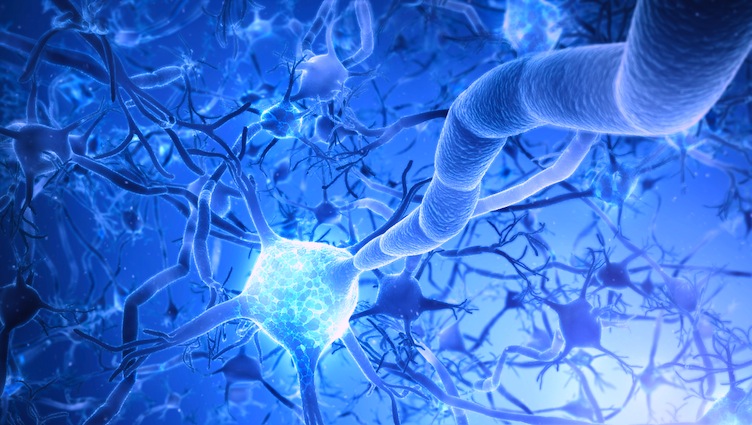Neurofeedback Therapy
Noninvasive Corrective Biofeedback Treatment
ADD/ADHD
Neurofeedback for ADHD treatment has proven to be an especially effective intervention in very young patients providing them with greater control over their cognitive functions both as children as well as adults.
ASPERGERS & AUTISM (ASD)
Neurofeedback has been shown to dramatically improve the quality of life and the level of functionality in those who suffer from ASD.
MIGRAINE/TENSION HEADACHES
Reduction of both frequency and severity of these types of headaches with the use of neurofeedback therapy has been documented to be as effective as medication without the undesired side effects.
PEAK PERFORMANCE
Neurofeedback has been a closely guarded secret of super successful individuals for decades and has provided them with the edge they need over the competition.
ANXIETY DEPRESSION & OCD
Severity and propensity of symptoms have been shown to dramatically improve with neurofeedback in conjunction with additional chemical or hormone support especially in children and adolescents.
FIBROMYALGIA/ CHRONIC PAIN/FATIGUE SYNDROME
Neurofeedback has been proven to provide relief and improvement of symptoms of these syndromes within a matter of just a few sessions.
WHAT IS NEUROFEEDBACK THERAPY EXACTLY?
Neurofeedback is also known as EEG Biofeedback. It is a guided exercise for the brain to retrain and retain the proper brainwave patterns and improve and or stop the imbalances that are a result of brainwave dysregulation.
Nearly every individual will suffer from some degree of brainwave disregulation due to tension on the nervous system caused by subluxation (spine out of alignment), poor nutrition, stress, food sensitivities, drugs and medications, trauma, etc.
Once these irregularities occur they induce a host of neurological symptoms that may go unnoticed or present themselves in various neurological and chemical conditions such as attention deficiencies (ADD/ADHD), dyslexia, speech tics, migraines, insomnia, long and short term memory loss, pain, fatigue, weight gain, hormone imbalances, anxiety, depression, panic attacks and so on.
Over 40 years of research has demonstrated that with specific corrective brainwave therapy, these conditions can be improved and or completely disappear depending on the severity and unique situation of the patient and have even been used to correct post stroke trauma.
Most notably, children have a very high positive response rate to these therapies as their brains are still very highly adaptive and flexible in adopting new behaviors and patterns.
After the proper brainwave patterns have been established in the patients brain, the positive effects can be long lasting and have been shown to last up to 30 years or more.
HOW IT WORKS:
- Neurofeedback begins with a Quantitative Electroencephalogram (QEEG) evaluation. The procedure consists of placing a cap on the head that has 12 sensors that measure and record brainwaves coming from the brain.
- Once the brain signals have been recorded, they are compared to a statistical database of normative behavior and a Brain Map report is generated to allow the doctor to asses what training protocols are needed and will prove most effective.

- Since the sensors are noninvasive (as no electrical current is put into the brain) but only the brain itself is controlling the software, the software can automatically adjust the feedback which appears in the form of a game, movie, or sound to reward the brain whenever the proper wave-forms are established by allowing the patient so see and hear the media.
- Contrary to what you might think, you cannot ‘will’ the software to have it do what you consciously want it to do. It operates directly at the subconscious level and therefore even very little children can benefit from it as it does not require active interaction, only attentiveness which enables the subconscious brain to adapt and learn to adopt the new behavior.


- The right sequence of protocols are selected and are then utilized on subsequent sessions to retrain the brainwave patterns towards normal function. After a determined number of sessions a second QEEG assessment is done to assess the efficiency and effectiveness of the brain’s new patterns and to determine what are the optimal next steps or protocols.
- As the brain progresses and improves, the protocols will change to accommodate and work towards optimal function.

- After the complete initial series of sessions are completed, the patient and administrator reassess how the brain is functioning as well as how the patient feels to see what additional protocols, medications, nutrition, or other needs would be beneficial to the patient.
- Once completed, a patient may come in every month or so for a refresh session to continue to reinforce the positive gains and help maintain healthy brainwave patterns over the long term as new stresses occur as a part of normal life.
LEARN MORE:
Neurofeedback
Neurofeedback is also known as EEG Biofeedback. It is a guided exercise for the brain to retrain and retain the proper brainwave patterns and improve and or stop the imbalances that are a result of brainwave dysregulation.
ADD/ADHD
 The term attention deficit disorder (ADD) is an outdated but still used term to describe what is now more broadly accepted and more accurately attention deficit hyperactivity disorder (ADHD). It happens to be one of the most common childhood disorders and its severity differs from person to person but affects over 6.4 million children according to the CDC.
The term attention deficit disorder (ADD) is an outdated but still used term to describe what is now more broadly accepted and more accurately attention deficit hyperactivity disorder (ADHD). It happens to be one of the most common childhood disorders and its severity differs from person to person but affects over 6.4 million children according to the CDC.
It is broken down into three main types of behavior:
Inattention – Those who are easily distractible and lose attention quickly but don’t exhibit impulsiveness or hyperactivity. These individuals are often forgetful in daily activities, make careless mistakes that are uncommon to them normally, ignore those speaking to them even when spoken directly to, get side-tracked, struggle with organization, lose items, and dislike tasks that require sustained mental effort.
Hyperactive/Impulsive – Those who can focus just fine but have difficulty exhibiting self control or restraint. These individuals will often talk excessively, always feel the need to be busy, struggle to wait their turn or remain seated or still in one position, interrupt, intrude on others, and often act inappropriately in a given situation.
Combined – Those who struggle with impulse control, paying attention, and distractions.
Children will usually display symptoms early in childhood before puberty and will have clear evidence that their social interactions and daily functions are interfered with in ways that would not necessarily be attributed to anxiety or other mood conditions. Most adults who are told they have ADHD, have had these symptoms for years but have been undiagnosed until later in life .
Typically these individuals are treated with either stimulant medications (Adderall, Ritalin, etc) or nonstimulants (Strattera, Guanfacine, etc). Problem is, you have to deal with the side effects and also the long term effects which have been shown often will lead individuals to need mood stabilizers such as Lexapro, Zoloft, Amitriptyline, and so on.
Over time the effectiveness of the medications wears thin or stops working altogether (if it worked in the first place). There have been multiple studies, including a notable one by Vincent Monastra out of New York that studied the effects of neurofeedback and medications on children. He found that in many cases, the children were able to cut back or eliminate their dosage as a direct result of neurofeedback therapy. And while it may not be the complete panacea, it has shown to have dramatic impact in improving the behavior and cognition issues that ADHD can present.
Studies:
- A Comparison of Neurofeedback and Psychostimulants in Treating ADHD
- ADD ADHD Demystified: What You Really Need to Know
- ADHD Drugs May Slow Growth
- ADHD JOURNAL OF PEDIATRICS
- ADHD Monastra
- ADHD Neurofeedback Comparison with Medications
- ADHD 2006 Study
- Efficacy of Neurofeedback in the Treatment of ADD/ADHD
- ATTENTION COGNITIVE and EXECUTIVE PROCESSING
- Duke University: A New Study for Treating ADHD
- EEG Biofeedback in Schools
- Electroencephalographic Biofeedback: Neurofeedback in the Treatment of ADD ADHD
- Evaluation of Effectiveness – Lubar
- Neurofeedback Comparison – Fuch Study
- In School Neurofeedback Training for ADHD
- JOURNAL OF NEUROPSYCHOLOGY Study
- Neurofeedback for the Treatment of Children and Adolescents with ADHD -August 2012 Study
- Self-Regulation: A New Treatment for Children with ADHD
- The Effects of Stimulant Therapy: Neurofeedback and Parenting Style on the Symptoms of ADHD
- The Place of Neurofeedback for ADD/ADHD
- The Side Effects of ADD & ADHD Medication
- Washington Post Article
Video Testimonial:
MIGRAINE & TENSION HEADACHES
Migraines are sever headaches that are commonly accompanied by nausea, vomiting, tingling or numbness, extreme sensitivity to sound or light, slurred speech, dizziness or fainting, seeing a halo or aura around lights, or blind spots. They can last for days at a time and can come in clusters where one headache will end followed by another one within hours for sometimes up to weeks. This type of severe headache can cause major disruption to both work and life activities.
While not all factors are understood, it is known that hereditary and environmental factors play a large part in the cause and severity of migraines. Imbalances or a decrease in serotonin levels are known to cause the release of neuropeptides that affect the outer area of the brain called the meninges in conjunction with the trigeminal nerve which is a major pain pathway in the brain.
Hormone changes, food additives such as aspartame and monosodium glutamate (MSG), alcohol, stress, bright lights or unusual smells, smoke, perfume, prolonged sleep deprivation, oral contraceptives and vasodilators, processed foods, and intense physical exertion are all known factors in triggering the onset of a migraine.
Tension headaches by contrast, are described as more mild to moderate pain that is spread across a region of the head often spanning the entire back, side, or front. It is the most common type of headache and one of the least understood. There is no clearly identified cause as to why tension headaches occur, yet sensitivity to pain and stress are considered some of the leading theories.
The severity often increases with the frequency of tension headaches and if they occur or last more than 15 days out of the month they are considered chronic. Fortunately they do not come with all the visual disturbances or nausea and vomiting associated with migraines, but they are no less uncomfortable and distressing.
Neurofeedback has been scientifically proven to be effective in treating both migraines and tension headaches. In fact, in some studies patients have seen reduction in frequency and duration of between 45-60%, which is the equivalent to the relief provided by known medications such as certain beta blockers tricyclic antidepressants except that neurofeedback does not have any of the associated side effects and can improve the patients quality of life for decades.
Studies:
Video Testimonial:
Anxiety, Depression, & OCD
 Anxiety is a normal emotion as is depression, however when either of these become out of sync with the magnitude of the life events that are inducing stress they become major causes of interference in having the ability to lead a normal life and can develop into difficult mental disorders.
Anxiety is a normal emotion as is depression, however when either of these become out of sync with the magnitude of the life events that are inducing stress they become major causes of interference in having the ability to lead a normal life and can develop into difficult mental disorders.
Those suffering from a particular anxiety disorder suffer:
Generalized Anxiety Disorder – Excessive concern, worry, or unrealistic expectations that cause tension and internal turmoil that has little to do with anything that may provoke these thoughts and happens even when there is no specific stressor causing anxious thoughts.
Panic Disorder – Sudden onset of feelings of overwhelming terror that strike repeatedly and without warning. This is accompanied by increased heart palpitations, difficulty breathing, sweating, chest pains, dizziness, and difficulty being consoled and understanding the reality of the present situation.
Social Anxiety Disorder – Overwhelming self-concern and self-consciousness in everyday social situations such as speaking, working, or otherwise interacting with other individuals either one-on-one or in group settings. The worry is focused on fear of judgement, embarrassment, ridicule, giving offense, or suspicion that everyone is “lying” to you when they interact with you.
Those suffering from a particular form of depression disorder suffer:
Seasonal Affective Disorder – Severe mood changes that are brought on normally during the winter months where access to natural sunlight is less available. This depression is characteristically improved with the onset of spring and summer.
Perinatal Depressive Disorder – Most commonly referred to as “baby blues” this can occur within about 2 weeks after delivery. Women will often feel major depression before or after delivery that is accompanied by exhaustion, sadness, anxiety and struggle to care for themselves and their babies.
Persistent Depressive Disorder – This is consistently referred to as chronic depression where depressed moods will last in excess of 2 years (Dysthymia). This may be experienced in a series of waves or major and minor episodes where there seems to be a cyclical up and down in severity but nevertheless a constant and persistent depressed mood.
Bipolar Disorder – While not exclusively depression, these individuals experience periods of severe depression followed by manic or other feelings of intense irritability or in some cases euphoria.
Additionally, there are newly added diagnostic disorders that have been added including Disruptive Mood Dysregulation Disorder (primarily diagnosed in children and adolescents) and Premenstral Dysphoric Disorder (PMDD).
With all the variations that emotional disorders may present, what is consistent is that there are generally genetic, environmental, hormone, and chemical factors that impact how the brain processes stress. Since the brain “learns” patterns of thought, these developed responses can be improved and “re-learned” to allow the brain to exhibit correct wave forms which can improve the patient’s ability to manage the onset and severity of these disruptive mental disorders.
Often with medication and hormone regulation, major improvements can be made and over time, possibly even elimination of the effects of the disorders has been seen in conjunction with neuorfeedback therapy.
Studies:
- Neurofeedback Anxiety Affective Disorder
- Neurofeedback Anxiety and Depression
- Neurofeedback with Depression & Anxiety
- QEEG GUIDED NEUROFEEDBACK in the Treatment of OCD
Video Testimonial:
Aspergers & Autism (ASD)
 Autism Spectrum Disorder (ASD) is a broader classification that includes disorders that affect social interaction, communication (both verbal and nonverbal), and behavioral and interest related activities. Many classifications use to be segregated, but recently they have been combined into a broader definition with ASD being used to describe the three main types:
Autism Spectrum Disorder (ASD) is a broader classification that includes disorders that affect social interaction, communication (both verbal and nonverbal), and behavioral and interest related activities. Many classifications use to be segregated, but recently they have been combined into a broader definition with ASD being used to describe the three main types:
- Asperger’s Syndrome
- Pervasive Development Disorder (non specified PDD-NOS)
- Autistic Disorder
Each of these are described in terms of levels of functionality and routinely take professional evaluation to determine the type and severity of the psychiatric condition. Additionally, there are two more rare forms that can be categorized into the ASD group including Rett Syndrome (primarily affecting females) and the most severe form, Childhood Disintegrative Disorder (CDD).
The current technical methods of diagnosing these disorders is in a bit of a state of flux but what has been generally accepted and often been described as signs and symptoms are: a lack of eye contact, awkwardness in social situations, improper responses or the lack thereof, missing social cues or body language and facial expressions, lack of or limited range of emotional responses and expression, dislike of change in routines, and excessive focus on a particular subject.
Asperger’s syndrome is considered the most mild form of autism and is very common in boys, affecting males 3 times more often than females. It is also often accompanied by above normal intelligence and an intense focus on a single object or topic with impairment in social skills and or awkward or uncoordinated body movement.
Pervasive Development Disorder (PDD-NOS) is considered more severe than Asperger’s but less severe than Autistic. Since the functionality of the individual and the diagnosing professional’s criteria may vary a bit, it is often diagnosed as the middle ground when the professional feels that the individual is too high performing to be classified as autistic but not as functional as one with Asperger’s.
Autistic Disorder is more rigid in its criteria and is characterized as having severe impairments to social, language, and behavioral functions, as well as exhibiting marked repetitive behavior. They can also experience seizures and retardation.
In all of these cases, there has been some extensive studies that have documented the improvement and in many cases dramatic improvement of individuals with ASD using neurofeedback. In many countries across Europe and in China, this type of therapy is becoming widespread due to it’s non-invasive application and marked results that have been documented over the course of years in following specific individuals.
While it will not completely resolve the issues that these individuals face, it has been shown to dramatically increase the quality of life that they experience.
Studies:
- ASPERGERS Case Study 1
- ASPERGERS Case Study 2
- AUTISM Case Study Testimonial
- AUTISM CONNECTIVITY GUIDED NEUROFEEDBACK
- AUTISM JOURNAL NEUROPATHY
- AUTISM QEEG BASED NEUROFEEDBACK
- CNN Report Autism
- MILD AUTISM NEUROFEEDBACK
Video Testimonial:
Peak Performance
Peak Performance is something that everyone hopes to achieve in all areas of life. With neurofeedback patients have been able to notice a significant improvement in multifaceted areas of their daily routines. This is especially noticeable in areas where impulse control, focus, stress management, sleep, and emotional stability come into play; all of which contribute to an individual’s ability to perform better at specific tasks in work, sports, technical, and other cognitively intense functions.
Since neurofeedback helps the brain learn specific patterns and literally solidifies them in neuropathways, proper brainwave function can be used to reinforce already strong signals and make them even stronger and more defined. It is not just about fixing what is not working, but also optimizing that which is already doing well.
Many individuals who are highly trained, such as professional sports players, musicians, financial traders, business executives, leaders, coaches, have been using neurofeedback for years to gain the edge, and in the past have even traveled from one country to another just for neurofeedback sessions when this was once only done in university studies.
Olympians, professionals, surgeons, special forces, NASA, Formula 1 teams, etc. all appreciate the edge that neurofeedback provides and we highly encourage you to consider it even if you feel everything is going well for you as it is something that can be done to provide you with long lasting positive benefits in addition to correcting anything in your brainwave patterns that may be awry.
Studies:
- CELLIST ACHIEVES OPTIMUM PERFORMANCE THROUGH NEUROFEEDBACK
- EEG TRAINING COLLEGE STUDENTS
- EFFICACY OF NEUROFEEDBACK FOR PEAK PERFORMANCE
- GENERAL NF AND PEAK PERFORMANCE
- JOURNAL AMERICAN BOARD SPORT PSYCHOLOGY
- NEURO FEEDBACK IMPROVES MUSICAL PERFORMANCE
- OPTIMIZING SURGICAL SKILLS WITH NF
Video Testimonial:
Fibromyalgia & Chronic Pain
Fibromyalgia is a very difficult autoimmune syndrome that primarily affects the muscles and soft tissues of the body inducing chronic pain, fatigue, points of extreme tenderness, muscle spasms, insomnia, stiffness, nausea, bowl problems, numbness, tingling, and swelling. Additionally it causes cognitive difficulties including forgetfulness, “mental fog”, sensitivity to light, odor, sound, food, temperature, medications, anxiety, depression, and can affect hormone balance and behavior.
If it is not addressed and diagnosed early the symptoms may go in indefinitely or they may emerge and then go into remission for months or even years at a time and then return with varying severity.
Fibromyalgia, chronic pain syndrome, and chronic fatigue syndrome are more commonly misdiagnosed as symptoms or signs of other maladies as most medical professionals are not well versed in nor well equipped to specifically separate the overwhelming number of symptoms. Other potential issues with depression, hormone imbalance, or multiple sclerosis are most often explored prior to or misdiagnosed as the problem only to find years later that they do not adequately describe the real issues at hand or the symptoms continue to worsen.
Individuals suffering from this are also socially ostracized (particularly males as it most often affects females) as many feel that the person is making it up due to the sheer amount of symptoms presented or the suddenness and irregularity of how symptoms manifest from day to day or hour to hour.
Many researchers believe that these syndromes are a result in part to how the brain processes pain and other signals with the sensations becoming extremely amplified with no single triggering event; although some cases have been shown to occur due to physical trauma, stress, surgery, infection, or severe psychological stress. This may also be a result of accumulation over time of any of these negative factors within the body triggering the body and brain to not process them correctly.
While there is no clearly identified cure for these syndromes, a variety of medications can ease or help control some symptoms for periods of time. Hard consistent exercise, neurofeedback sessions, strict nutrition and supplement control, hormone management, and stress reduction measures have all been shown to be highly effective in improving the lifestyle management ability of individuals suffering from these conditions particularly in reducing the severity of pain, fatigue, insomnia, and mental clarity.
Neuorfeedback has been shown to reduce the sensation and severity of pain in particular within just a handful of sessions.
Studies:
- EEG DRIVEN STIMFIBRO
- NEUROFEEDBACK and PAIN FMRI
- NEUROFEEDBACK FIBROMYALGIA
- NEUROFEEDBACK in PAIN MANAGEMENT
- NEUROFEEDBACK PAIN MED
- NEUROFEEDBACK TREATMENT for PAIN
- NEUROTHERAPY for FIBROMYALGIA
Video Testimonial:
Additional Studied Benefits
Studies:
- 2 Thetas
- Asymmetrical AAPB
- Asymmetry Training
- Broyd Study
- PTSD: Coping with the Horrors of War
- Dedovic Study
- Default Network Buckneratal
- Delta
- EEG Imaging Tool
- Hemoencephalography – 4 Years and 100 Migraines
- Lesion Models
- Low Coher Connectivity
- Neurophysiological Basis of EEG
- Neuro Therapy for Fibromyalgia
- Pascal Leone Amedi et. al. Ann Rev Neuroplasticity
- Pascual Leone Compensation Neuroscience
- Peniston PTSD
- PTSD
- Scientific America Scale Free
- Seizures Sterman 2000
- The Networks
- Turner TBI Compensation
- UCLA Study: Addiction
- Wong Study

FAQ:
FAQ
Get answers to your frequently asked questions here.
Is neurofeedback dangerous?
It is completely noninvasive and is regulated and approved by the FDA. It does not induce any electrical current into the brain and has been shown to have NEVER produced a serious side effect since it was first discovered over 40 years ago.
Are there published studies demonstrating the efficacy of this treatment?
For over 40 years it has been studied in research labs at prominent universities throughout the world and you can find numerous publications of medical studies that can be downloaded for you to review by selecting any of the sections in the Learn More area of this page .
A very well respected Dr. Frank H. Duffy, a Professor & Pediatric Neurologist at Harvard Medical Scool stated:
“Neurofeedback should play a major therapeutic role in many different areas. In my opinion, if any medication had demonstrated such a wide spectrum of efficacy it would be universally accepted and widely used.”
We encourage you to read and review any of the studies provided and research on your own if you want to find further evidence of the benefits of this type of treatment.
How long is a treatment session and how many will I need before the changes are permanent?
A normal treatment session will last 30 minutes and most patients will typically do 20 sessions. In some cases, it may require more but keep in mind that these changes have been shown to be permanent.
Just as you learned to ride a bike as a child and can go for decades without doing so and then hop back on like it was yesterday, the brain itself forms new circuitry (referred to as Neuroplasticity) as a result of these sessions and it is exactly how we learn and adopt new behaviors and thought patterns. These sessions will help the brain literally change its structure to keep the benefits that can last.